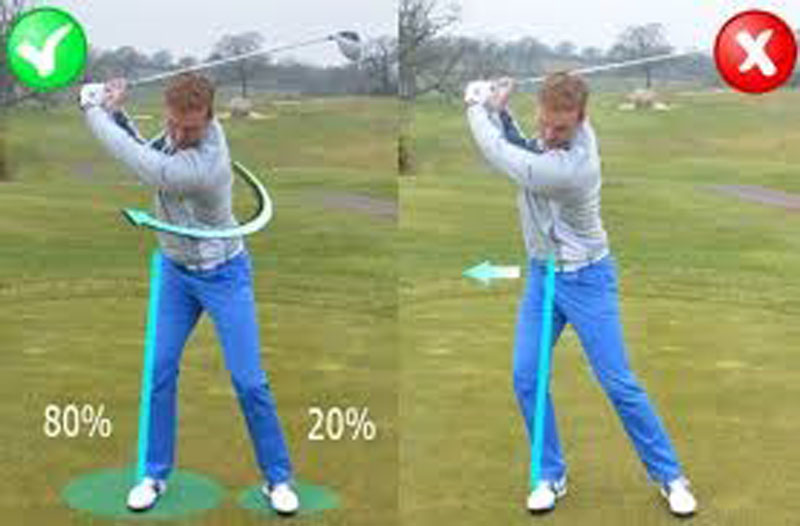This week we are going to address part two of maintaining your spine angle. If you have been observant while watching golf and perhaps the Open last week you saw the players maintaining their right side bend at impact. Nick Faldo was mentioning how important it was for certain players to maintain their spine angle and just how important it was. He stressed how losing spine angle was getting players into trouble and making them inconsistent.
However, the second part of maintaining spine angle that we are going to talk about this week is swaying or moving from side to side. Of course if you sway AND move up and down you would obviously be in big trouble and many beginners and high handicappers unfortunately will do both. But let’s just focus on swaying as shown in the graphic below.
The reason most people sway when taking the club back is because it only seems natural to move the body back along with the club. People who have played a lot of baseball tend to make this move. In golf we want to stay still over the ball as we take the club back but also turn. A few players such as two time US Open champ Curtis Strange, have successfully swayed but most people only get into trouble. If you sway, you have to move your entire body back into it’s starting position at impact and that’s a lot of moving parts. The more moving parts in a golf swing means that there is more that could go wrong. Chances are you won’t be successful in making contact in the middle of the club face every time if you are swaying. It’s also difficult to keep the club face square at impact if you are swaying.
If you sway and want to correct it try to maintain the flex in your back leg and your weight on the inside of that foot. Letting your weight shift to the outside of your back foot is a major factor in why you sway. Also, keep your eyes steady over the ball on your backswing. You should be able to tell if your eyes move and we don’t want that. Jack Nicklaus’ teacher used to hold his hair for hours at a time while he hit balls to keep his head steady. Although this is a bit extreme I have found just putting my hand or a club on the top of a student’s head or hat on the backswing will work just as well and the result is immediate better ball striking.
In summary, maintaining your spine angle, whether it is up or down or side to side, is one of the most important fundamentals for consistent ball striking. Work hard on keeping still on your backswing, yet getting a full turn and you will…play YOUR best golf!







